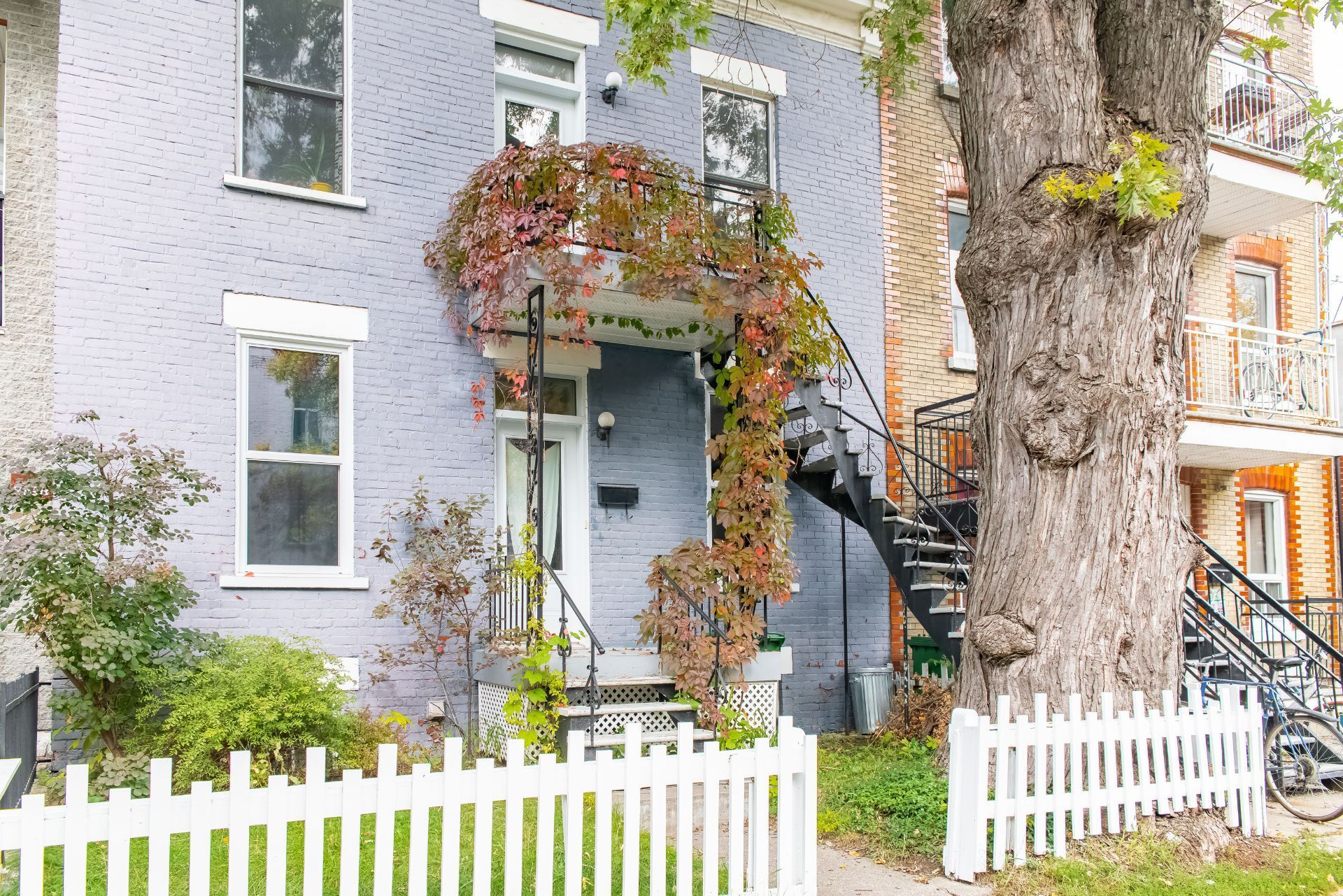Minnesota Townhouse Rental Insurance

See How We're Different
or call us: (763) 242-1668
Common Business Insurance Policies
By: Matt Larsen
Owner of Capstone Insurance Group & Restaurant Insurance Advisor
763-242-1668
Index
Contact Us
For townhouse renters and owners in Minnesota, understanding the nuances of rental insurance is becoming increasingly important. With rising insurance premiums and shifting market dynamics, protecting your property and assets requires careful consideration. This guide covers everything you need to know about Minnesota townhouse rental insurance, including current trends, cost factors, and practical tips to navigate the evolving landscape.
Recent data shows that Minnesota
homeowners are facing significant increases in insurance premiums. According to
Insurify, average monthly premiums will rise from $294 in 2024 to $338 in 2025, a 15% increase. This trend is echoed in condominium and townhouse communities, where some have seen
property insurance rate hikes as steep as 400%. Understanding these changes is crucial for renters and landlords alike.
Why Minnesota Townhouse Insurance Costs Are Rising
Several factors contribute to the rising cost of townhouse rental insurance in Minnesota. One major driver is the high volume of insurance claims relative to premiums collected. A Federal Reserve Bank of Minneapolis report revealed that in 2022, insurers paid out $1.92 in claims for every $1 collected in premiums. This imbalance forces insurance companies to raise rates to maintain financial stability.
Additionally, Minnesota ranks 12th nationally for premium increases, with a 39% rise over seven years—far outpacing inflation. This surge reflects not only increased claims but also broader industry shifts, including changes in underwriting standards and reinsurance costs. For townhouse communities, these increases can be especially pronounced due to shared insurance policies and the age of many buildings.
The Impact of Older Housing Stock
Many rental properties in Minnesota, particularly in Greater Minnesota, are older structures. According to the Federal Reserve Bank of Minneapolis, 28% of rental housing properties were built before 1960. Older buildings often require more expensive repairs and upgrades, which in turn drive up insurance costs. For townhouse renters and landlords, this means higher premiums and potentially more stringent insurance requirements.
Moreover, the aging infrastructure can lead to a higher likelihood of claims related to water damage, electrical issues, and other maintenance-related problems. As these properties age, they may also face challenges in meeting modern safety standards, which can further complicate the insurance landscape. Insurers may need to conduct more thorough inspections and impose additional conditions on policies, all of which can contribute to rising costs. This situation creates a cycle where the need for increased coverage and the reality of higher risks lead to an ongoing escalation in insurance premiums.
Furthermore, the impact of climate change cannot be overlooked. Minnesota has experienced a rise in severe weather events, including heavy storms and flooding, which have led to significant property damage. Insurers are now factoring in the increased frequency and severity of these events when calculating risk and setting premiums. As a result, townhouse renters in areas more susceptible to such weather patterns may find themselves facing even steeper insurance costs, as companies adjust their pricing models to account for the heightened risk associated with climate-related claims.

What Townhouse Renters Should Know About Insurance
While landlords typically carry property insurance for the building itself, renters must secure their own insurance policies to protect personal belongings and liability. Renters insurance in Minnesota can cover losses from theft, fire, water damage, and other unexpected events. Given the rising costs of property insurance, renters may also face stricter lease requirements regarding insurance coverage. This trend emphasizes the importance of being proactive in understanding the nuances of renters insurance, as it not only safeguards personal assets but also provides peace of mind in an unpredictable world.
Renters should carefully review their policies to ensure adequate coverage limits and understand exclusions. For example, damage caused by flooding or certain natural disasters may not be covered under standard policies and might require additional riders or separate policies. It’s also wise for renters to keep an inventory of their belongings, documenting items with photographs and receipts. This practice can streamline the claims process in the unfortunate event of a loss, ensuring that all personal property is accounted for and valued correctly.
Liability and Additional Living Expenses
Liability coverage is another critical component of renters insurance. It protects tenants if they are found responsible for injury or property damage to others. This is particularly relevant in shared living environments, such as townhouses, where interactions with neighbors can lead to unforeseen incidents. Additionally, many policies include coverage for additional living expenses if the rental unit becomes uninhabitable due to a covered loss. This can help renters afford temporary housing while repairs are underway. Understanding the limits of this coverage is essential, as some policies may only cover the cost of a hotel stay up to a certain amount or for a limited duration, which could leave renters vulnerable in extended situations.
Moreover, renters should consider the potential benefits of bundling their renters insurance with other policies, such as
auto insurance. Many insurance providers offer discounts for bundling, which can lead to significant savings over time. Additionally, exploring options for increasing deductibles can also lower premium costs, although this should be weighed against the risk of having to pay more out-of-pocket in the event of a claim. Engaging with an insurance agent can provide valuable insights tailored to individual needs, ensuring that renters are not only compliant with lease requirements but also well-protected against the unexpected.
How Rising Insurance Costs Affect Townhouse Communities
Insurance premiums are a significant expense for homeowners associations (HOAs) managing townhouse complexes. Mark Foster, Vice President of the HOA Leadership Network, notes that property insurance now accounts for 34% of the average HOA’s annual budget, up from 27% in 2022. This increase places financial strain on communities, often leading to higher HOA fees for residents.
Some Minnesota townhouse and condominium communities have experienced insurance rate hikes of up to 400%, according to The Minnesota Star Tribune. These dramatic increases can impact property values and complicate efforts to maintain affordable housing.
Challenges for Affordable Housing Development
The rising cost of property insurance is also influencing decisions around new housing developments. Multifamily rental property owners report that insurance expenses are increasingly factored into feasibility studies, sometimes limiting the construction of affordable housing units. This trend is concerning given Minnesota’s growing demand for affordable rental options.
Developers and community planners are seeking innovative solutions to mitigate insurance costs, including investing in modern building materials and safety features that reduce risk. However, these measures may not fully offset the broader market pressures driving premium increases.
Moreover, the insurance industry is increasingly scrutinizing the risk profiles of properties, leading to more stringent underwriting criteria. This shift means that communities with a history of claims or those located in areas prone to natural disasters may face even steeper increases or difficulty obtaining coverage altogether. As a result, some HOAs are exploring alternative insurance models, such as self-insurance pools, which could provide a buffer against the volatility of the traditional insurance market.
Additionally, the impact of rising insurance costs extends beyond just financial implications. It can also lead to a decrease in community engagement, as residents become frustrated with rising fees and reduced amenities. This discontent can erode the sense of community that is vital for townhouse living, prompting some residents to consider moving to areas with lower costs of living. As such, the challenges posed by escalating insurance premiums are not just economic; they also threaten the social fabric of these communities.
Tips for Managing Townhouse Rental Insurance Costs
Despite rising premiums, there are strategies renters and landlords can use to manage insurance costs effectively. For renters, bundling renters insurance with other policies, such as auto insurance, can often yield discounts. Shopping around and comparing quotes from multiple insurers is also essential to find the best coverage at a competitive price. Additionally, maintaining a good credit score can positively impact insurance rates, as many insurers consider credit history when determining premiums. Renters should also take advantage of any available discounts, such as those for having a security system or being claims-free for a certain period.
Landlords and HOAs can work with insurance brokers to tailor policies that reflect the specific risks of their properties. Investing in risk mitigation measures—such as updated electrical systems, fire alarms, and storm-resistant construction—can help lower premiums over time. Furthermore, regular property inspections and maintenance can not only enhance safety but also demonstrate to insurers that the property is well cared for, potentially leading to further reductions in insurance costs. It’s also beneficial for landlords to educate their tenants about safety practices, as a well-informed tenant can reduce the likelihood of incidents that might lead to claims.
Understanding Policy Details and Coverage Options
Both renters and property owners should carefully review policy terms, including deductibles, coverage limits, and exclusions. Some policies may offer endorsements or riders that provide additional protection for valuable items or specific risks. Being proactive about understanding these options can prevent costly surprises in the event of a claim. For instance, renters might consider adding coverage for high-value items like electronics or jewelry, which may not be fully covered under standard policies. Similarly, landlords should look into liability coverage that protects against claims made by tenants or visitors, as this can be crucial in safeguarding against lawsuits.
Moreover, it’s important to stay informed about changes in local laws and regulations that may affect insurance requirements. For example, some municipalities may mandate specific coverage types or minimum limits for rental properties. Keeping abreast of these developments can help both renters and landlords ensure compliance while optimizing their insurance strategies. Additionally, engaging in community discussions or forums can provide insights into how others are managing their insurance costs, leading to shared tips and best practices that can benefit all parties involved.

The Future Outlook for Minnesota Townhouse Insurance
Experts predict that Minnesota’s property insurance market will continue to evolve in response to climate-related risks, economic factors, and regulatory changes. The Federal Reserve Bank of Minneapolis highlights the ongoing challenge insurers face in balancing claims payouts with premium income, which will likely keep upward pressure on rates.
For renters and townhouse communities, staying informed and adaptable is key. Monitoring market trends, maintaining open communication with insurers, and investing in property maintenance can help mitigate the impact of rising insurance costs. Additionally, understanding the specifics of coverage options available can empower homeowners and renters alike to make informed decisions that best suit their needs. For instance, exploring policies that offer comprehensive protection against natural disasters, such as floods or wildfires, can provide peace of mind in an increasingly unpredictable climate.
As the state grapples with these challenges, stakeholders from renters to policymakers will need to collaborate to ensure that insurance remains accessible and affordable, supporting Minnesota’s diverse housing needs. This collaboration could involve community forums where residents can voice their concerns and suggestions, fostering a more inclusive dialogue about insurance practices and policies. Furthermore, innovative solutions such as group purchasing plans for townhouse associations may emerge, allowing members to benefit from collective bargaining power, potentially leading to lower premiums and better coverage options.
For more detailed insights on the rising costs and challenges facing Minnesota property insurance, the
Federal Reserve Bank of Minneapolis provides comprehensive analysis and data.





